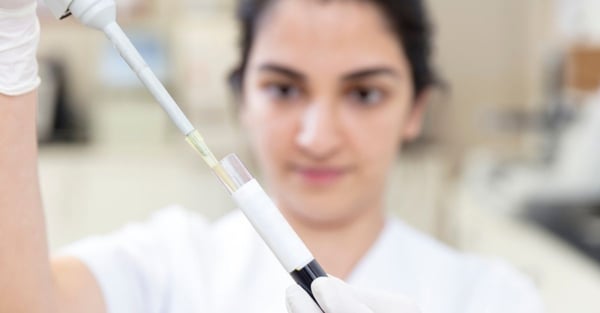Preclinical research is an essential stage in Drug Discovery. Traditionally in vivo animal models are used in the preclinical stage to determine whether a drug is suitable for clinical trials (which involve testing on humans). However, the preclinical stage is costly and time-consuming. In some cases, it can take up to 10-20 years to establish if a drug is safe for testing on people and it can cost more than $2 billion to test a single compound.
In addition, there is increasing social and political pressure to find in vitro alternatives to animal models for preclinical studies, and some countries have banned the use of animals in certain testing situations.
This leads to a need for alternative models to animal testing, for the purposes of reducing costs, maximizing time efficiency, and on ethical grounds. In this article, we will explain why alternative models should be used for preclinical research.
Traditional Preclinical Research
Preclinical stage (also known as the non-clinical phase) is essential for the study of the biological effect of a proposed drug or treatment on the human body. This phase studies the effect a drug and its ingredients may have on human organs and tissue.
At the preclinical stage, the number of possible compounds is greatly reduced from around 10-20,000 to approximately 250. The toxicity and efficacy of these compounds must be demonstrated before moving to the clinical trial stage and applying for regulatory approval.
Animal models have been historically used in preclinical research to study the effect of a new drug on a living organism. Traditionally, the most commonly used animal models are rodents, as they mirror human architecture in many ways. However, there are many other alternative models that researchers can use in lieu of rodents, in order to save money, time, and follow the 3Rs principle.
Alternative Models for Preclinical Research
Besides the use of animal models in preclinical research being expensive and time-consuming, the practice is also on its way out, as more regulatory agencies and governments are prioritizing 3Rs practices.
The 3Rs policy aims to reduce animal suffering and encourage pharmaceutical companies to find alternative models. The principles are:
- Replace. To find another option to using animals for research.
- Reduce. To decrease the number of animals used in research.
- Refine. When experiments on animals are essential, to improve their welfare.
Modern technology and other approaches mean there are several alternative models to animal research that are faster and cheaper than traditional methods and that align with the 3Rs. These include the following:
- Computer models. The use of computer simulations to model chemical and biological activity as well as human disease models.
- Cell cultures. The growth of 2, 3, and 4D cells to replicate human cells. These cells could be continuous cell lines, primary cells or induced pluripotent stem cells (iPSCs).
- Organs on a chip. Microdevices engineered to mimic living human organs, such as the lungs, heart, and intestines.
- Human cell models. The culture of several types of cells to resemble specific tissues for example real human cells, cardiomyocytes, chondrocytes, hepatocytes etc.
- Tissue engineering. The creation of replica human tissue.
- Microfluidic chips. The manipulation of fluids to monitor drug delivery.
- Fungal models. Which can produce cell systems with a scenario similar to mammals.
- Alternative species. The Zebrafish is a popular choice as the larvae are not considered to be in vivo studies until 5-6 days after fertilization. These vertebrates also offer a very close resemblance to human organs with 85% of genes conserved with human pathologies.
Using alternative models also requires less space and husbandry than for live animal models, which is another cost saving. As technology and alternative research methods continue to improve so will the accurate prediction of drug efficacy and toxicity, leading to more cost-effective and efficient preclinical testing.






